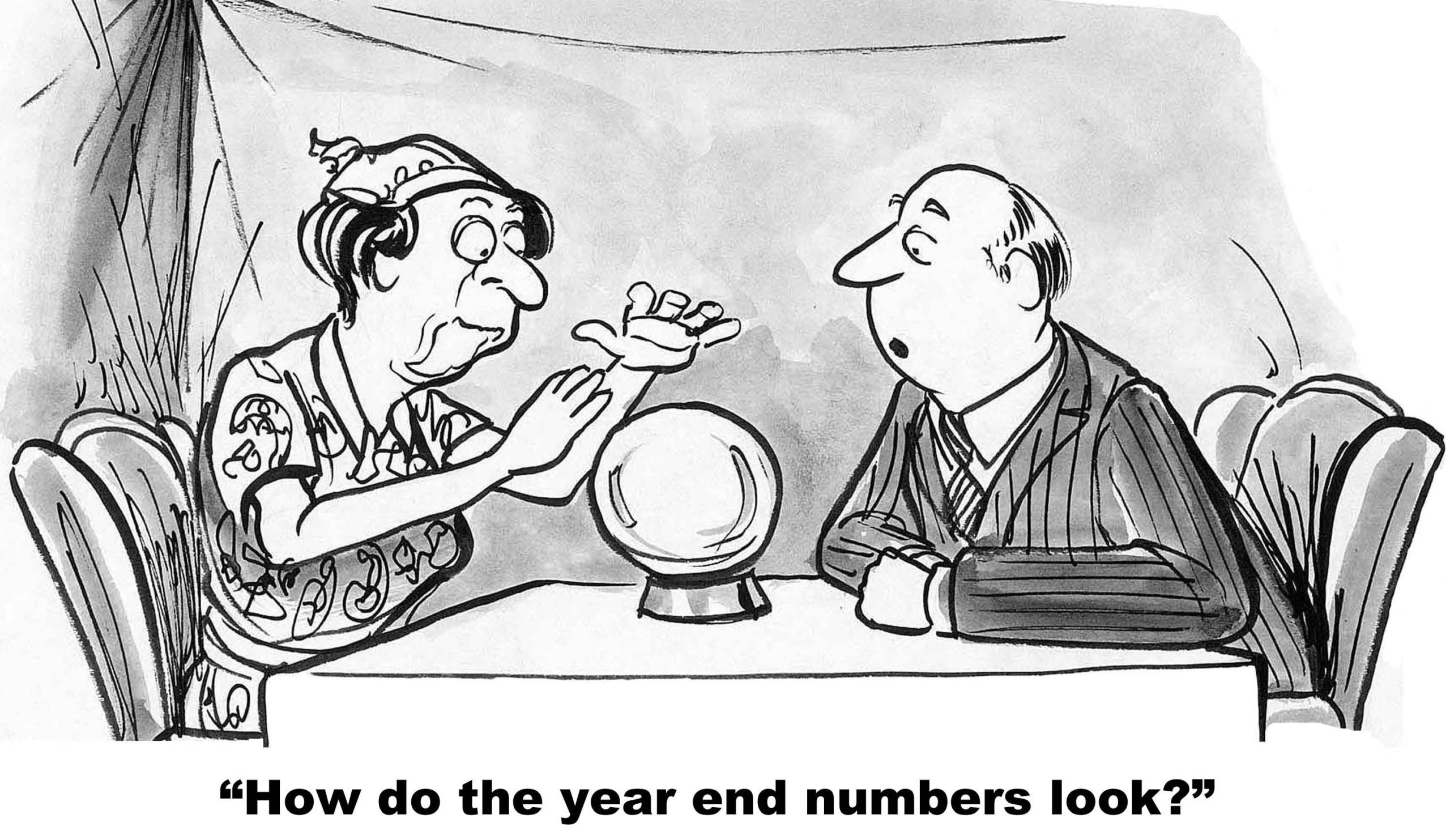Sales managers are not always present in small businesses, so we are often asked what…

The Most Important Elements to Improve Sales Forecasting
We all want to increase sales. The benefit of sales forecasting is that it helps management determine and make new decisions based on the forecast that the sales team is putting forth.
Business becomes much more enjoyable when you can predict what your sales and profit margins will be. The problem is sales forecasts are usually less reliable than predicting the weather. Mark Denning, CPA and Author of “Drive Your Business to Financial Success” states in his book, “The key variables with the highest risk and level of difficulty to forecast are revenue and gross margin.” These are two areas your sales team plays a big role in setting and achieving.
How do we do that? It doesn’t happen overnight and it doesn’t happen just because you have a new CRM and you now are tracking opportunities. Here are some elements we use to help you improve sales forecasting:
-
Trusting Relationship
Have strong, trusting relationships between the salespeople and the sales manager if you want to improve sales forecasting. If you have a sales manager grinding their team to fill the pipeline, salespeople will likely stuff junk in there. Management needs to know what’s real. Salespeople need to be able to have honest communication with their sales manager. If salespeople are afraid to be honest when things are slow, you’ll never get a true forecast. Honesty helps you make the right adjustments in your tactics so you can achieve the forecast. If people believe they’ll get belittled, you may hear more about a big deal they are working on that someday should close. The someday that never arrives. This is where coaching with backbone and heart proves very useful. Don’t let people get away with giving up on their goal, but listen and coach them into how they can improve. Sometimes they might need support through marketing or service, as well as a better effort on their part. The main point is to believe in your sales people and allow them to tell you “bad” news with the intent to make it better. -
Be real
Find a healthy balance between stretching yourself to grow and being honest about your resources, capabilities and follow-through record. Too often salespeople are asked to plug in unrealistic numbers into a spreadsheet to help a sales manager or owner look good in a meeting. If you keep it real, your salespeople will respond when you ask them to stretch. -
Make sure you have the resources to meet the forecast
I was privileged to watch a team of 30 great people move their forecast attainment from 8% to 92% in one year. The company’s ownership invested in infrastructure improvements to help the team be their best. Instead of working hard to make up for poor systems and products, the energy went into growing the business. Ownership wanted higher growth and realized part of being real was helping people with what they needed. Do your salespeople have tools like CRM, smart phones, or tablets? Is the communication and systems between support departments flowing smoothly? Are your products and delivery resulting in referrals or customer service tickets? -
Don’t leave it all up to the sales team, get other departments involved in sales forecasting
The last point made was about having the resources to attain your forecast. By getting more departments involved in the sales forecasting process you might discover what resources need to be added or changed to be on target. You’ll also gain more buy-in from support departments to help sales meet the goal. -
Qualifying Criteria
Have clear criteria on what is a qualified opportunity. Spend time as a team and decide, “What are our criteria that should be acknowledged before we add them into the deal pipeline.” In addition, add that into your stages in your CRM. -
Disqualify Opportunities
You have to have a manager who’s willing to disqualify deals to improve sales forecasting. Salespeople qualify deals, and sales managers should disqualify them if they are not meeting standards. In other words, we want to challenge them and make sure they did a good job at qualifying. If they aren’t qualified, they cannot stay in the pipeline. -
Is your sales process one that all salespeople are practicing?
When you can add more predictability to how salespeople are working, it is easier to manage performance. You don’t need to create sales robots without decision-making ability. I would suggest you have general milestones (sales steps and stages) and confirmations of buyer commitment that serve as indicators of a more qualified buyer. If you’re still basing your forecasting on how your salespeople “feel” about the deal…well, you know where that leads. -
CRM Alignment
Make sure your CRM is designed well with your sales process and business so salespeople will find value in keeping the data current.
This is where your forecasting reports come from, and as they say, “Garbage in, garbage out.” The CRM can be a tool that adds accountability and real-time status of where you stand against your forecast today and in the future. In addition, it’s a management and marketing tool to help salespeople close more business. If it’s more of a burden, you might consider looking at how you are using it and also examine if you have the right system. Things are very affordable today, especially if you’re growing sales. My personal favorite for most small businesses today is Zoho CRM and Google Apps as your email management system. The two together allow for customization and, most importantly incredible integration to do work in the CRM from within your email. -
Refine Probabilities
You want to always be refining your probability percentages. For instance, you have a deal in your CRM and it’s moving along in stages. Usually, companies will set a percentage of probability that that deal will happen based on the stage. Over time, you want to refine those percentages. Also, you want to get accurate with your sales folks on adjusting those percentages based on other criteria being met, and not just on gut feel. -
Monitor Pipeline
Monitor deals and stages of your pipelines during your sales team one-on-ones. That’s a great time when you both can drill down and qualify and disqualify opportunities. -
Make your goals and forecasts important to sales
Keep the forecast and results in front of everyone on a weekly or at least a monthly basis. When you recognize someone for sales attainment, tie it back to how they are doing regarding their forecast.
When your sales team becomes one that is counted on to meet the sales forecast, budgeting and planning becomes so much easier. Why not try these ideas out and see if you can improve your sales forecasting vision to 20/20.
Bonus Tips to Improve Sales Forecasting
Here’s some bonus ideas for you if you’d like to take your forecasting even further. Have your CRM notify you when deals are hanging out too long. Furthermore, you can address whether sales should be moving out of the pipeline or if they need attention to progress.
Have peers qualify deals for your salespeople. For instance, in order for a deal to enter the pipeline, your salespeople need to run it by one of their teammates. They will be challenged to make sure it is a qualified deal.
Lastly, if your sales forecasts are close to actual sales at the end of the quarter, set up a bonus to reward your sales team.
To conclude, when we’re able to predict what sales will happen and have good forecasting out of our CRM and through our sales team, that puts the executive level at the company in a great position to make better decisions for the future.
Subscribe to my YouTube Channel




This Post Has 0 Comments